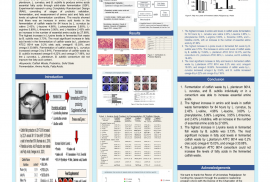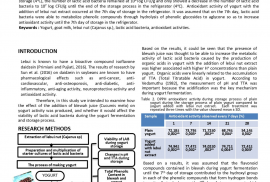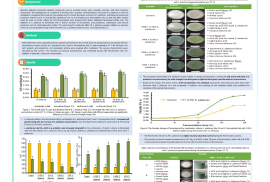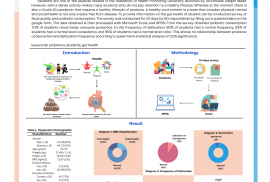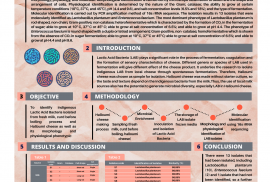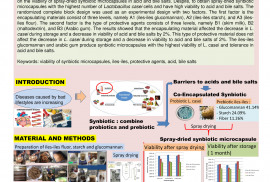By: Ratu Safitri, Eri Sulistiati, Abun, Tri Yuliana
ABSTRACT
Catfish waste (Pangasius sp.) has a high nutritional content of 22.96% carbohydrates, 35.81% protein, and 12.47 % fat, so it is very potential as raw material for the production of amino acids and essential fatty acids through fermentation. In the study of catfish waste fermentation using L. plantarum, L. curvatus, and B. subtilis, the aim was to analyze L. plantarum, L. curvatus, and B. subtilis to produce amino acids essential fatty acids through solid-state fermentation (SSF). Experimental research using Completely Randomized Design (RAK), consisting of stages of probiotic validation, fermentation, and measurement of amino acid and fatty acid levels at optimal fermentation conditions. The results showed that there was an increase in amino acid levels in the fermentation of catfish waste for 84 hours by L. curvatus by valine 2.43%; L-leucine 4.96%; L-phenylalanine 3.60%; L-arginine 5.89%; L-threonine 3.95%; and L-histidine 2.43% with an increase in the number of essential amino acids by 27.68%. The highest increase in L-lysine levels in fermented fish waste by B. subtilis was 3.73%. The most significant increase in fatty acid levels in the fermentation of catfish waste by L. plantarum ATCC 8014 was 0.2% oleic acid, omega-6 15.03%, and omega-3 30.88%. Fermentation of catfish waste by L. curvatus increased omega-3 by 5.94%. Fermentation of catfish waste by B. subtilis increased omega-6 4.22% and omega-3 7.98%, but the L curvatus, L. plantarum, B. subtilis consortium did not improve the fatty acid content.

